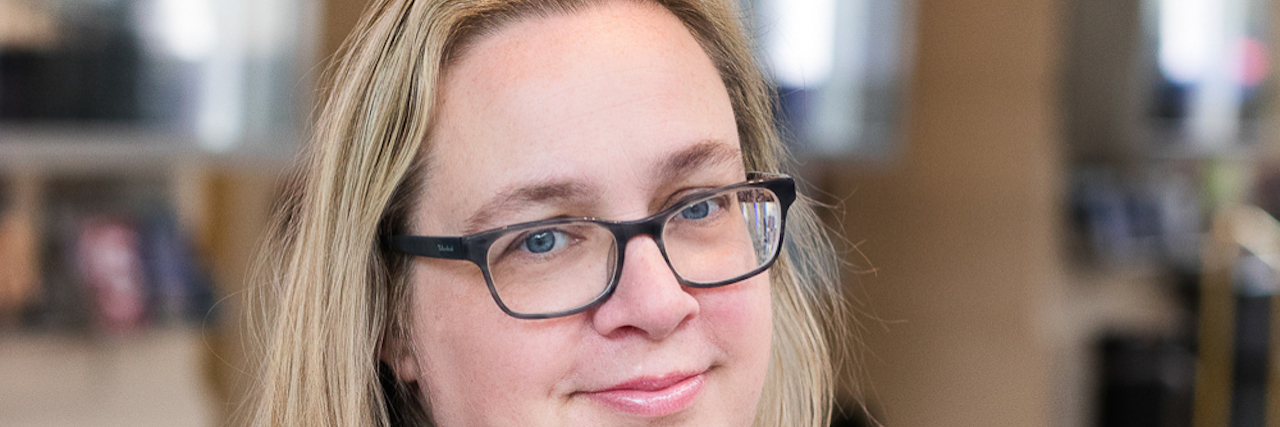Children's Mental Health Services Are Failing Young People
Editor's Note
If you experience suicidal thoughts or have lost someone to suicide, the following post could be potentially triggering. You can contact the Crisis Text Line by texting “START” to 741741.
A recent Guardian article quotes:
“Three in four family doctors do not believe under-18s they refer to child and adolescent mental health services will end up being treated, research shows.”
This research is from the charity YoungMinds, and unfortunately in my experience it is all too accurate. Our case (and I’m not going to go into details because that story is not mine to tell) was severe, and we were eventually helped. But each contact with CAMHS (the NHS’s Child and Adolescent Mental Health Services) after a severe trauma brought advice which subsequently turned out to be untrue. Turns out there is help available, but only the most severe cases get it, and before that you are told it doesn’t exist.
One suicide attempt?
Well, it probably wasn’t serious. You probably took all those paracetamol by accident. You don’t meet the threshold for help. We’ll send you some contacts where you can get help (translation: some websites which have some resources for you to look at — such as YoungMinds. Websites you can find yourself anyway in 10 minutes of googling). And even though you have been exhibiting strong signs of OCD for months, we’re going to ignore that.
Two suicide attempts?
Still not telling people when you feel bad? Use this traffic light system. You can be discharged from hospital and we’ll put you on a waiting list for another appointment in a few weeks. When we’ll discharge you. And we’ll ignore the OCD.
Three suicide attempts?
Not using the traffic light system? That must be your parents’ fault. Buy some colored wristbands so people in school can see how you’re feeling. Even though you have told them your child won’t wear them (sensory issues and also — what 13-year-old would wear them in school?!).
You can have group therapy. Even though you have told them your child won’t go through the door if multiple people are going to be there. Also, even though it’s now June, the group doesn’t start until September. And there’s a waiting list — you might not get on it but we’ll put you on the list.
And there’s one more thing — even though we now suspect you are autistic, the CAMHS waiting list for diagnosis is more than two years. Even after three suicide attempts. Still ignoring the OCD by the way.
Four suicide attempts?
OK it’s getting serious now. Since you are autistic (we will accept that private diagnosis at a pinch), we don’t want to send you to a Tier 4 inpatient unit, as studies have shown that autistic children don’t get good outcomes. So we’re asking the Commissioners to approve budget for the Intensive Support Team. Yes, we know that’s the support you’ve been asking for all along, but we couldn’t tell you it existed until now.
Still going to ignore the OCD though. Even more than a year after you were first referred to CAMHS. You’re on the waiting list for a group, but we don’t know when it’s going to happen, even though you’re now out of school because the effects are so debilitating.
There are many families throughout the country going through much of the same agony. Naturally, when you first encounter this scenario, you feel very isolated, and as a parent you are in a constant state of extreme stress. There is no moment you can feel relaxed when your child has expressed that they are suicidal. You can’t imagine ever being able to feel relaxed again. Every time they go upstairs, you wonder if they are self-harming or worse. Every time they go for a walk (if indeed you can allow them out alone) you wonder if they are buying any one of the myriad of things that can be used to harm oneself. You are (obviously) completely fixated on that child, and your relationship with your spouse and your other children takes a back seat, not to mention your own mental health. And yet there is almost no official support.
Facebook groups like Not Fine In School help you to realize how common this is. They are both uplifting and depressing at the same time. And the recent SEND report shows that children with SEND, many of whom are experiencing these mental health issues as a results of their needs not being met in schools, are being repeatedly failed by local authorities, by CAMHS, by schools and ultimately by the government — because of a lack of funding, which has brought us to such a pitiful state.
It’s not all bad news. I’m pleased to say I do get the odd moment of relaxation these days. I’m not always on edge. And while my daughter is home with me under the flexi-learning team, we have come up with a project she can get involved in — a subscription box for other anxious teens who are “not fine in school” all over the country. Something to tell them they are not alone, not “weird,” don’t need to be bullied, don’t need to mask, don’t need to attend a mainstream school which has almost broken them.
There is a way out of this pitiful children’s mental health mess. But it needs a complete rebuilding of all our systems. It needs an understanding that autism (ASD) and mental health issues cannot necessarily be segmented (I’m looking at you, CAMHS and Social Care), and that a child with ASD or other neurodivergent conditions might develop mental health issues because their needs are not even remotely being met. School has become a toxic place for them.
When so many of our young people are feeling suicidal, we must look at why this is happening and make changes. Now. Before it’s too late.
Photo courtesy of the author

